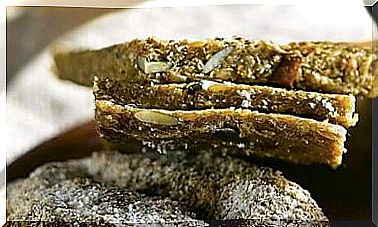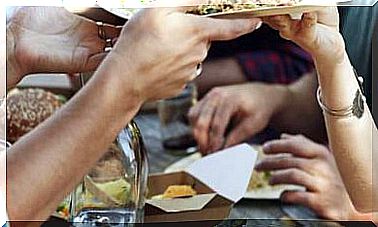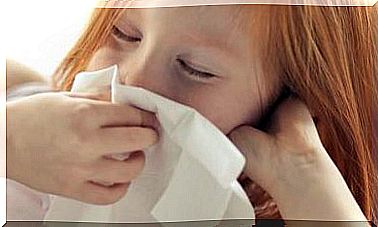A Gene Explains That Red Meat Can Be Carcinogenic
Researchers at the University of Nevada have unveiled the evolution of the gene that makes it possible to synthesize a sugar present in red meat. Human beings lost it two million years ago and that affects their health today.

The red meat, dairy products and eggs of some fish contain sugar, Neu5Gc, whose consumption has been linked to an increased risk of inflammation and appearance of cancerous tumors.
This sugar is present in animals that have an active gene called CMAH , but it is impossible to synthesize for animals that have this inactive gene.
A team of researchers from the University of Nevada, led by the Spanish David Álvarez Ponce, has analyzed the evolution of this gene in a wide catalog of species to determine when some species lost it, which ones are they and which ones still conserve it.
Among those who lost it is the human being. And, since the gene is not active, the human body does not recognize the sugar and identifies it as a foreign substance, which could trigger the inflammatory process.
A sugar in meat? Yes, and it affects you!
The Neu5Gc sugar is a type of sialic acid found on the surface of cells. “In animals that have the CMAH gene , this gene encodes an enzyme that converts another sugar (Neu5Ac, which is harmless) into Neu5Gc,” explains David Álvarez Ponce to Cuerpomente.
In animals that do not have this gene active, the reaction that the Neu5Gc sugar generates does not occur and, therefore, this sugar is not present. This is the case with poultry and seafood, which do not have it.
“We find it in red meats (veal, pork, lamb, etc.) and, to a lesser extent, in dairy products. Within red meats, veal has much higher concentrations than the others”, points out the expert.
A missing gene explains everything
It is believed that the CMAH gene was inactivated in our ancestors between 2 and 2.5 million years ago and that the loss allowed us to protect ourselves from pathogens that need the Neu5Gc sugar to cause an infection.
David Álvarez Ponce gives the example of a type of malaria that affects chimpanzees and gorillas, our closest relatives, but not human beings.
However, as humans gained that evolutionary advantage, they also became more vulnerable to certain meats and products derived from animals that did retain the gene.
Humans are not the only mammal to lose the CMAH gene. Others lost it at the time, as the Nevada study reveals: New World monkeys, the common hedgehog, seals and walruses, the ferret, some bats, the sperm whale, a species of deer, and the platypus.
“It would be very interesting to investigate why the gene has been inactivated in some groups and not in others,” says Álvarez Ponce.
In any case, eating meat from animals that do not have the gene would also have its risk. As they do not have CMAH , our tissues do not have just any Neu5Gc sugar (only in minimal amounts from the diet), but they do have high concentrations of Neu5Ac.
“This makes us susceptible to certain pathogens that bind to Neu5Ac, and other animals that do not have the CMAH gene are potential reservoirs for these pathogens. “
For the body, the sugar in meat is a “stranger”
Not being able to synthesize Neu5Gc sugar makes it unsafe for humans. According to Álvarez Ponce, when we ingest it “it is recognized as a foreign substance by our body, which we call a xenoantigen, and this can produce inflammatory processes and cancer”.
Scientific evidence already existed on the implications for human health not being able to metabolize this sugar present in red meat and other foods .
For example, a study was done with mice that had the CMAH gene inactivated and anti-Neu5Gc antibodies, as is the case in humans. Some were given a diet rich in Neu5Gc sugar and others were not. Those who ingested Neu5Gc had a high incidence of inflammation and cancer.
In the relationship between red meat and cancer, other factors have been pointed out , such as its heme iron content, substances that are formed with cooking or processing, or the excess of salt and additives in processed meats. However, the possible influence of Neu5Gc sugar is less well known.
In any case, today the only way to avoid or reduce exposure to this sugar is by stopping consuming or moderating the consumption of red meat and dairy products.
And cooking doesn’t seem to significantly affect your concentration. “It is not very clear, but we do know that red meat, and especially veal, whether raw or cooked, contains considerable levels of Neu5Gc,” says the Spanish researcher from Nevada.
Sugar is also in the roe of some fish
In another study , several fish were analyzed : salmon, tilapia, light tuna, lily, foxfish, swordfish, rainbow trout and sardines. No significant amounts of Neu5Gc sugar were detected, except in the roe of some of them.
“The amounts are not significant”, Álvarez Ponce clarifies, “but very high levels were found in the caviar of salmon and the so-called whitefish “.
The Nevada team’s study also showed that there are several groups of fish that do not have the CMAH gene and therefore should not contain the sugar. These include, for example, herring, cod, Atlantic striped bass or whale shark.
Among the species analyzed by the Nevada researchers, the gene has also been identified in two algae, but they are microscopic algae that are not for human consumption.









